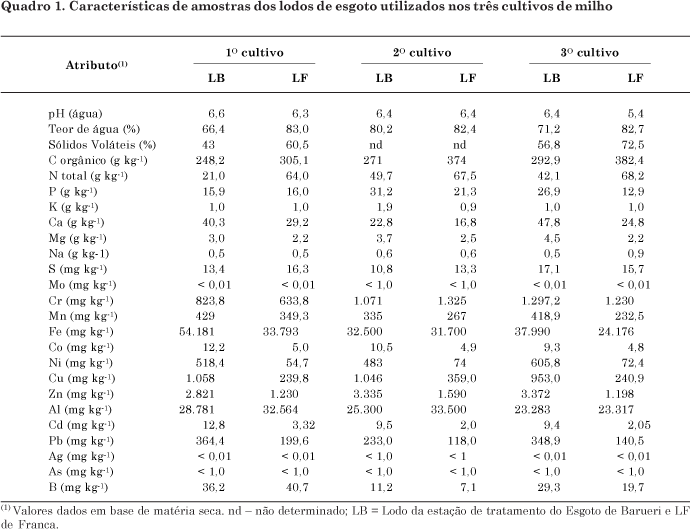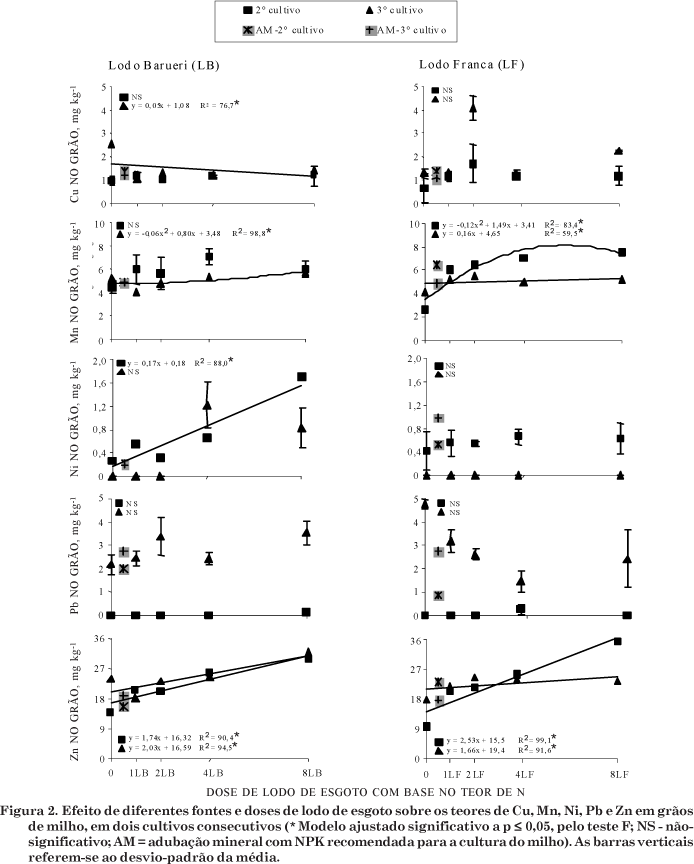Sewage sludge is an important source of nutrients for crops, although the heavy metal contents can limit its use in agricultural soils. The objective of this study was to evaluate the effects of doses of sewage sludge (from the Treatment Stations of Barueri (LB) and Franca (LF), São Paulo State, Brazil) on heavy metal concentration in corn leaves and grains. The experiment was carried out at the Experimental Area of the Embrapa Environment, in Jaguariúna, state of São Paulo, from 1999 to 2001. The following treatments were applied to three successive corn crops: control (no sewage sludge); mineral fertilization recommended for corn (NPK); application of sewage sludge corresponding to the supply of one, two, four and eight times the N applied in the NPK treatment. The total contents (nitric-perchloric digestion) of Cu, Mn, Ni, Pb and Zn were measured in corn leaves and grains. The successive application of sewage sludge caused increases in the Mn and Zn contents in corn leaves and grains. In relation to the control treatment, the application of the highest dose of LB (8LB) promoted an increment of up to 270 and 625 % of Mn, and 35 and 115 % of Zn concentration, respectively, in the corn leaves and grains. The corn leaves presented higher heavy metals contents than the grains, which implicate a greater possibility of metal transfer to the food chain in case this part of the plant is consumed. Until the third sludge application the heavy metal concentration observed in corn leaves were lower than the levels considered phytotoxic, and their concentration in corn grains were not high enough to make them unsuitable for human consumption.
biosolid; urban-industrial residue; Zea mays L.; environmental pollution





